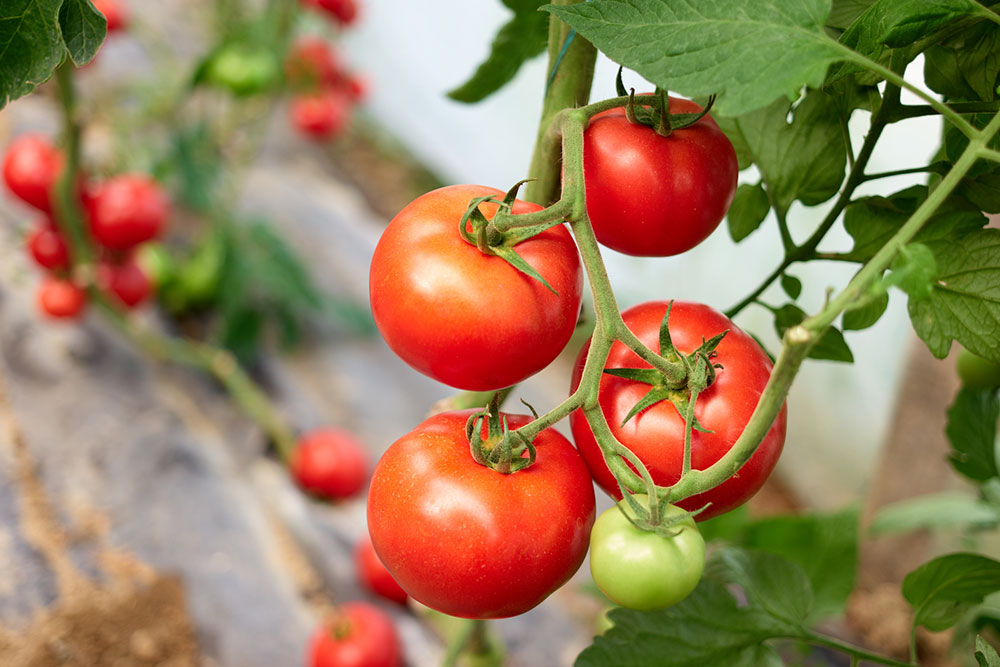How to Prune Tomato Plants for Maximum Harvest
Taking care of a tomato plant is challenging, and while a good harvest requires a lot of love, care, attention, and effort, there are ways to improve the yield and ensure better plant health. Pruning, for example, can increase the bounty of the harvest, improve fruit quality, and keep fungal diseases at bay. The pruning process involves selectively removing certain parts of the plant, such as damaged roots and non-productive branches.

Deciding which tomato plants to prune
Not all tomato plants are alike. There are different varieties, each with unique features.
- Indeterminate varieties
Tomato plants in this category continue to grow as long as they are alive and can sometimes become as tall as 20 feet. No limit exists on how much they can sprout and produce new stems and leaves. Such plants need to be pruned regularly for larger fruits. Popular varieties of indeterminate tomatoes include Big Boy, Beefmaster, Black Prince, German Queen, and most cherry and heirloom tomato varieties. - Determinate varieties
These plants have a predetermined number of stems, leaves, and flowers in their genetic structure and grow to a fixed mature size, generally between four and five feet. That’s why they do not need to be pruned beyond the suckers below the first flower cluster. Some common varieties of determinate tomatoes include Ace 55, Amelia, Better Bush, Biltmore, Heatmaster, Heinz Classic, Mountain Pride, and Patio. - Semi-determinate varieties
Varieties like Celebrity are hybrid plants that fall between these two categories, creating a distinct sub-section known as semi-determinate tomatoes.
How to prune a tomato plant?
To ensure the best yield, one must focus on pruning a tomato plant at different times throughout its growth cycle.
- At planting
During the planting stage, two key steps should be followed. First, remove the lower leaves so the plant can be buried deep into the ground. The deeper it is buried, the stronger its roots will be. Second, get rid of any flowers present on the plant. This allows the plant to focus all its energies on strengthening the roots instead of having to manage floral growth. - Early/mid-season
Like the second step discussed above, continue to remove the flowers until the plant grows 12 to 18 inches tall to keep the focus on building stronger roots. Along with that, one of the best ways to prune tomatoes is removing all the leafy suckers below the first fruit cluster. These small shoots begin to form in the spot where the leaf attaches to the main growing stem. The best time to do this is while they can still be pinched off with the fingers, as this will not injure the plant gravely. If cutting is imminent, use a sharp knife or a pruner blade to slice the suckers off neatly. This step will help improve the pace of development of the tomatoes. - Late season
As the growing and ripening season ends, the plant will likely be heavy with tomatoes. Many rely on “topping” to speed up growth at this stage. It involves cutting off the growing tip of each of the main stems about four weeks before the first expected fall frost. Doing so stops the growth of new flowers and fruits, instead shifting its focus onto the current lot. This step causes the fruit to ripen faster, ensuring a good late-season harvest.
Tips for pruning tomatoes efficiently
The benefits of pruning tomatoes are no secret. But to enjoy these benefits, it is important to be careful while pruning and follow the right tips.
- Always wait for the plants to be dry before pruning. Trying to prune them while wet will increase the risk of bacterial or fungal infections. These infections can be hard to manage and require extra time and effort.
- Don’t prune more than a third of the plant’s foliage, especially in warm weather, as this could expose the fruit to the sun. The extra leaves provide a light shade to promote tomato growth.
- Use clean tools (like knives, blades, and shears) while pruning each plant. This limits the spread of bacteria and fungi between them. A good way to clean shears is to wipe them with 70 percent isopropanol. Also, ensure these are extremely sharp so they don’t wound the plant’s stem tissue too much.
- In addition to pruning, get rid of any lower leaves (that touch the ground) and any yellowing or unhealthy leaves on the vine.
- When storing the tools away, apply a lubricant on them. This will prevent rusting, increase the life of the tools, and ensure they work well.
- Finally, don’t wait too long to prune the tomato vines! The small suckers will grow into larger, thicker branches that will not only impede plant growth but also be difficult to cut off. Keep a close eye on the growing vines and cut the suckers off while they are just sprouting.